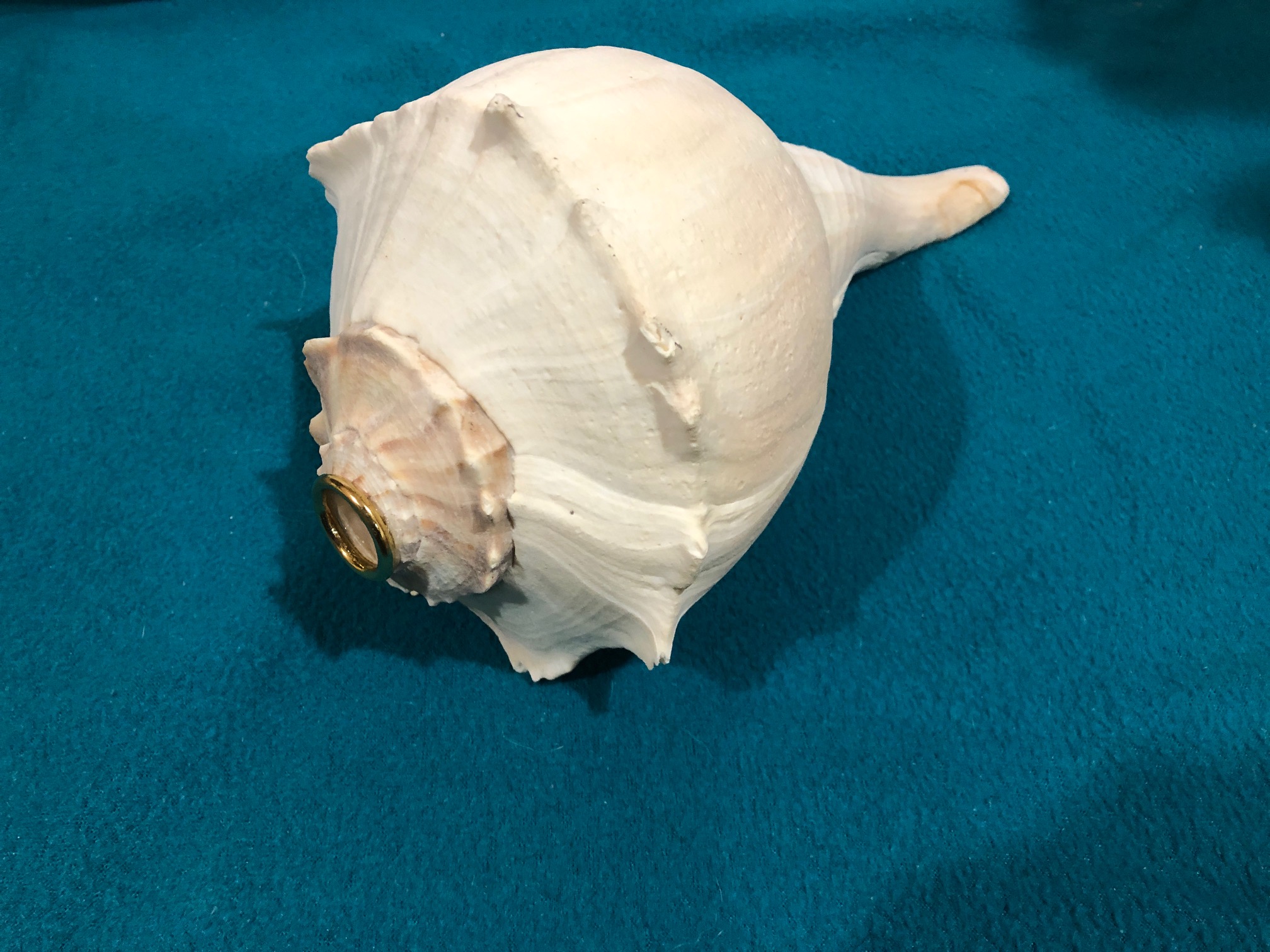
Left Turning Conch Horns Temple Quality
$167.00
The Worlds Only Left Turning Horns Each horn measures 9"+
Dakshinavarti Shankh Shell Horns
Truly The Horn Of Vishnu and Siddhartha
Very Great Horns Made of Natural Left turning Sinistral Conch Seashells
Listening to the call of the ‘Conch’ tunes one to the wheel-of-time. These Horns are very similar in sound to the temple horns of Tibet and India. Hi pitched and they are not the easiest horns to blow. All horns come with a brass mouthpiece. Please let us know if you would not like the brass mouthpiece. Click below to listen to the Left Turning Conch Horn played by Don Chilton.
Due to the natural differences associated with making musical instruments out of Seashells, we take our measurements of shell length before cutting them, some shell horns will be shorter or longer depending on how much needs to be removed in order to make a nice sounding horn. It is one of the main emblems of Vishnu That is always held upright in his left hand and his conch bears the name of Panchajanya,
meaning 'having control over the five classes of beings
Arjuna's (hero of the Mahabharata) mighty conch was known as Devadatta, whose triumphant blast brought terror to the enemy
As a proclaiming battle horn, the conch is akin to the bugle
It is an emblem of power, authority and sovereignty whose blast is believed to banish evil spirits avert natural disasters, and scare away poisonous creatures.
Tibetan Buddhism
Today, in its greatly tamed avatar, the conch is used in Tibetan Buddhism to call together religious assemblies
During the actual practice of rituals, it is used both as a musical instrument and as a container for holy water.
The Left-spiraling movement of such a conch is believed to echo the celestial motion of the sun, moon, planets and stars across the heavens
Vajrayana Buddhism absorbed the conch as a symbol which fearlessly proclaimed the truth of the dharma
Among the eight symbols, it stands for the fame of the Buddha's teaching, which spreads in all directions like the sound of the conch trumpet
In addition to Buddha's throat, the conch also appears as an auspicious mark on the soles, palms, limbs, breast or forehead of a divinely endowed being. Conch Shell (Buddhism)
Share on facebook Share on twitter Share on email Share on print More Sharing Services 19
Symbolize the deep, far reaching and melodious sound of the teachings, which is suitable for all disciples at it, awakens them from the slumber of ignorance to accomplish all beings welfare. A right-spiraled conch is a rare find and is considered sacred in Buddhism.
The Conch (shankha), which is also used as a horn is one of the main emblems of Vishnu, and his conch, bears the name of Panchajanya, meaning 'having control over the five classes of beings.
There is a fundamental classification of conch shells occurring in nature: those that turn to the left and those which turn to the right. A right-spiraled conch is a rare find and is considered sacred in Buddhism. The right-spiraling movement of such a conch is believed to echo the celestial motion of the sun, moon, planets and stars across the heavens. Curiously, the whorls of hair on the Buddha’s head are right-directional; so are his body hair and the curl between his eyebrows. His navel too, is shaped like the right turning conch shell.
Vajrayana Buddhism absorbed the conch as a symbol which fearlessly proclaimed the truth of the dharma. Among the eight symbols, it stands for the fame of the Buddha's teaching, which spreads in all directions like the sound of the conch trumpet. In addition to Buddha's throat, the conch also appears as an auspicious mark on the soles, palms, limbs, breast or forehead of a divinely endowed being. Today, the conch is used as a summons to prayer. During rituals, it is used to hold holy water and as a musical instrument. The conch proclaims the widespread influence and sovereignty of Buddha’s teachings. It is emblematic of great spiritual power and its resonance is thought to cast out evil spirits.